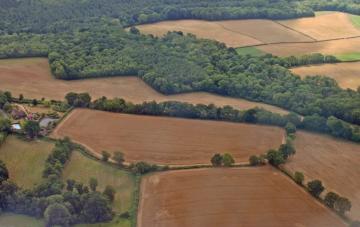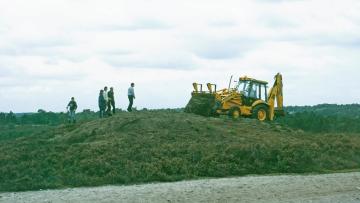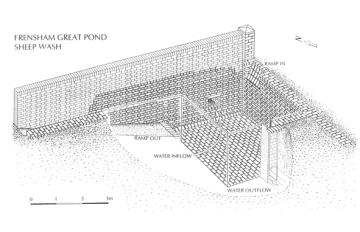Waverley
Fieldwalking at Roman site, Chiddingfold, 2002
An archaeological fieldwalking exercise was undertaken on the site of the large comples of Roman buildings at Chiddinfold. The project was led by T Howe of SCC and D Graham of SyAS.
For more information please view the attached report.
A re-survey of an outlying barrow of a group of barrows on Frensham Common, 2010
This barrow was surveyed by the RCHME in 1996 in advance of repair work, which involved raising the mound by about 60cm and laying gravel along the line of the footpath which crosses the barrow. By 2010 this gravel had worn away and this mound together with the group of three to the south, was re-surveyed by D and A Graham of SyAS at the request of English Heritage, to record the state of the monument.
Re-survey of three barrows on King's Ridge, Frensham Common, 2010
In 1996 the three barrows and the one immediately to the north were surveyed by the RCHME in advance of work to repair damage caused by horses and walkers eroding the mounds. This work involved capping the mounds, though not the southernmost one, with sand and laying gravel along the line of the paths that cross the crests of the barrows. By 2010 the gravel paths were again eroding away and the mounds being damaged by the pressure of public use of the Common.
Frensham Great Pond sheep wash, 1994
Report by A and D Graham of a sheep wash set into the dam at the outflow of Frensham Great Pond, probably constructed shortly after the commons were enclosed in 1851. (286)
Watching brief at 74 Castle Street, Farnham 1995
A watching brief by K D Graham of SyAS on works for a rear extension confirmed that the site had previously been extensively disturbed and no trace survived of the 13th century pottery kiln identified in 1991.
For more information please view the attached report
Watching brief on land adjacent to 4 Hampton Road, Farnham 1996
A watching brief by K D Graham of SyAS on the construction of a house on this site revealed no features or finds of archaeological interest. A metal detector survey also produced no material earlier than the 19th century.
Watching brief at 46 Downing Street, 1996
A watching brief by K D Graham of SyAS on the works for a rear extension revealed no features or finds of archaeological interest apart from a carved stone block with the initials of James Newland Baker who was responsible for constructing the walls in the 19th century.
Watching brief at Malthouse Yard Cottage, Farnham 2011
Watching brief by A Graham of SyAS. Two possible quarry pits of likely 18th/19th century date were revealed.
For more information please view the attached report
Watching brief at 88B West Street, Farnham 2017
Watching brief by D&A Graham of SyAS. The footing trenches for an extension were examined. No finds or features of archaeological interest were revealed, with the site having apparently been horizontally truncated during the construction of a previous extension in the 20th century.
For more information please view the attached report




